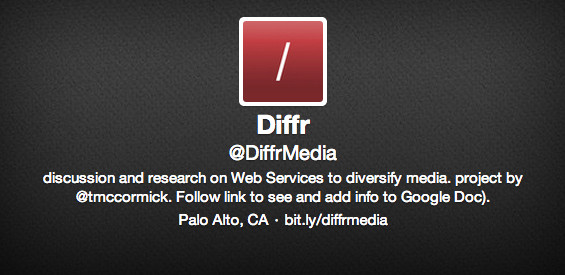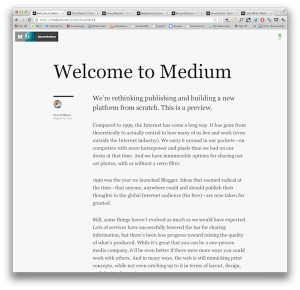 Slightly expanded version of my post in the Twitter Developers forum “Ideas/requests for new analytics/metrics” started by Gary Wolf (co-founder, Quantified Self).
Slightly expanded version of my post in the Twitter Developers forum “Ideas/requests for new analytics/metrics” started by Gary Wolf (co-founder, Quantified Self).
I hugely agree with Gary, that there is a need for better user-oriented analytics/metrics — that is, support for users to have more control over social-media volume and noise level, to better evaluate and change who they follow (subscribe to) and what they encounter. (I would add, providing metrics explicitly is one way to do this, but it may also be done more implicitly, for example by designing user interfaces that learn or incorporate feedback better, or which surface features for curatability and filtering).
While the conversation may not have blown up in this Twitter Developers forum yet, I have seen many extensive discussions closely related to the issue elsewhere in the last several years. I believe that making Twitter more user-manageable is crucial both for attracting new users (“crossing the chasm“) and for retaining heavy/lead users (listening to the lead users / “alpha geeks,” who often lead consumer tech trends).
In a broader perspective, the point is not just about Twitter, but Twitter as the impetus or laboratory for a bigger question: how can we humanely design and use the new online & social-media environments which are fast becoming central to people’s lives globally?
Some recent, high-profile & much-discussed articles on this topic include:
- Jenna Wortham in the NY Times “Valley of the Blahs: How Justin Bieber’s Troubles Exposed Twitter’s Achilles’ Heel” (January 25) .
- Alexis Madrigal in The Atlantic: “2013: The Year ‘the Stream’ Crested“: (December 12).
I’ve been writing and talking about this in the last two years, including
- Quantified Self talk “Healthier Information” in March 2012 ;
- post “What if Twitter were designed to put users in charge?” (May 2013) .
- “From reading drift to reading flow” (Sept 9, 2013).
Recently I have started a project I call FlowSort to prototype tools for user analytics and alternative UIs for curatability/overview/agency. It is both tackling my own problem, with my own data, and investigating what might have value to perhaps a large part of Twitter’s current and potential user base — or what might inform design of new social-media platforms/tools. I am looking to partner with other developers/orgs interested in building these capabilities — including possibly with Twitter itself, eg as an exploratory, pilot, or trial project.
sort for flow..
Tim McCormick, Palo Alto
.




